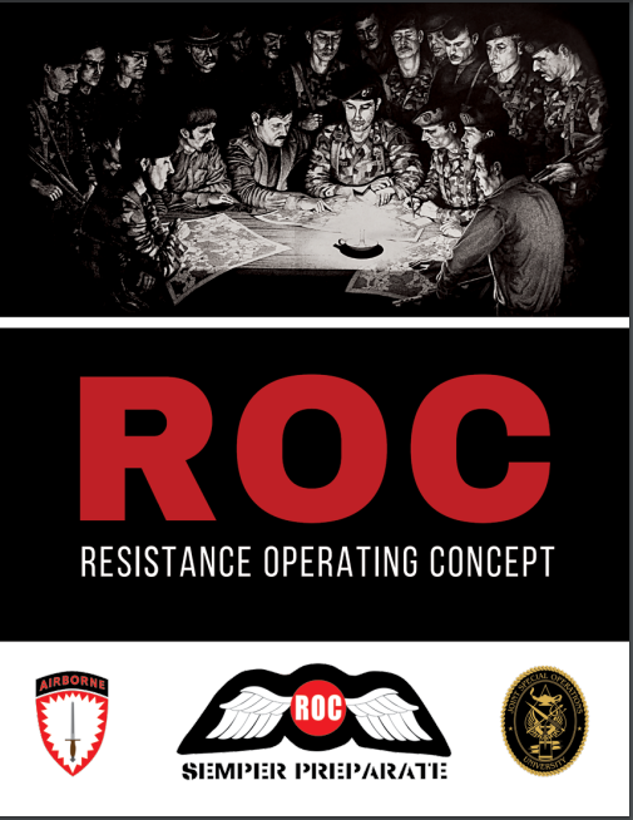The document Resistance and the Cyber Domain is a U.S. Army Special Operations Command publication that examines how resistance movements leverage cyberspace for organization, communication, security, and operations. It discusses historical and contemporary insurgencies, the role of social media, cyber operations, and the vulnerabilities that both resistance movements and state actors face in the cyber domain.
By: Mike Robinson, Former U.S. Army Special Forces Officer
In an era where governments rely on digital infrastructure for control, administration, and enforcement, resistance has evolved beyond the battlefield. This op-ed explores a fictional scenario where a ruling administration purges 40,000 government employees—including former FBI, CIA, and other intelligence personnel—alongside thousands of DEI (Diversity, Equity, and Inclusion) professionals from minority, LGBTQ, and religious groups. Faced with limited conventional options, these highly trained individuals and social activists turn to cyber and information warfare to resist.
Drawing from Resistance and the Cyber Domain, a U.S. Army Special Operations Command publication, we examine how such a movement could form. Additionally, we connect this concept to real-world nonviolent resistance strategies, including the work of Radio Free Ukraine—a nonprofit providing Ukrainian civilians with tools and knowledge to resist Russian occupation using digital activism, psychological operations, and information technology.
Phase One: Organizing the Digital Underground
Every insurgency requires a base of operations. Historically, this meant mountain hideouts or urban guerrilla cells, but in the cyber domain, the resistance forms in encrypted networks and decentralized communities.
Former intelligence officers—trained in tradecraft and counterintelligence—establish secure communication channels using tools like Tor, Matrix, and Signal. Meanwhile, cybersecurity experts teach operational security (OPSEC) to prevent government tracking and infiltration.
Unlike traditional insurgencies, which rely on armed struggle, this movement leverages nonviolent resistance tactics, similar to those used in Ukraine. Drawing from Gene Sharp’s 198 Methods of Nonviolent Action, the resistance employs:
- Digital boycotts – Blocking government-aligned businesses from financial services.
- Symbolic protests – Viral social media campaigns exposing government overreach.
- Cyber sanctuary networks – Hosting banned content on offshore servers and mirror sites.
The thousands of ex-DEI employees, now marginalized, become a crucial asset. With deep experience in organizing grassroots activism, they mobilize online communities, create counter-narratives, and provide emotional resilience to those resisting authoritarian measures.
Phase Two: Cyber Sabotage and Information Warfare
Governments depend on digital control—whether through surveillance, AI-driven propaganda, or economic oversight. The resistance exploits these vulnerabilities to erode the administration’s grip on power.
- Disrupting Infrastructure: Cyber operatives target government IT networks, voter registration systems, and financial institutions, creating chaos while ensuring plausible deniability.
- Narrative Warfare: The resistance floods social media with disinformation designed to sow discord within the regime’s ranks, using deepfake technology and AI-enhanced messaging campaigns.
- Defensive Cyber Shields: Experts deploy VPNs, encryption, and anti-surveillance tools to protect dissidents and whistleblowers.
These tactics mirror those employed by Radio Free Ukraine, which helps civilians in occupied territories resist Russian control. Ukrainian IT specialists, supported by international volunteers, use secure communication tools, anonymous messaging apps, and guerrilla media strategies to keep resistance alive. The same principles apply to our fictional resistance, proving that information is both a shield and a weapon in modern conflict.
Phase Three: Escalation and Hybrid Warfare
As the government tightens control, resistance shifts from cyber operations to a hybrid insurgency, blending digital disruption with real-world activism. This phase incorporates lessons from Ukraine’s IT Army and other decentralized resistance networks.
- Economic Pressure Campaigns – Encouraging mass withdrawals from government-backed banks and disrupting supply chains to weaken state control.
- Public Loyalty Fracturing – Leaking classified documents that expose government corruption, eroding trust among military and law enforcement personnel.
- Counter-Surveillance Networks – Using open-source intelligence (OSINT) to track government operatives, similar to how Ukrainian civilians identify Russian troop movements.
Rather than direct armed confrontation, resistance forces use psychological operations to undermine the administration’s legitimacy, forcing defections and internal discord.
The Role of Nonviolent Resistance: Lessons from Radio Free Ukraine
While cyber warfare is a powerful tool, nonviolent resistance remains the backbone of enduring movements. Radio Free Ukraine demonstrates how digital activism, secure communication, and psychological resilience can empower civilians against occupation.
Through expert-led workshops, the nonprofit provides Ukrainians and international supporters with training in secure communications, misinformation countermeasures, and digital self-defense. These methods apply beyond Ukraine, serving as a blueprint for resistance movements worldwide, including our fictional scenario.
Nonviolent resistance is particularly effective in democracies where outright repression risks backlash. Instead of direct confrontation, resistance cells:
- Expose hypocrisy – Using leaks and investigative journalism to highlight government failures.
- Redirect information – Replacing censored content with alternate digital pathways.
- Utilize global networks – Seeking support from international advocacy groups, leveraging legal and financial pressure.
By aligning with journalists, ex-government officials, and cybersecurity experts, the movement gains legitimacy while avoiding direct military engagement.
Conclusion: The Future of Digital Resistance
This scenario, though fictional, is rooted in reality. The increasing reliance on digital control makes governments vulnerable to decentralized, tech-savvy resistance movements. Whether in Ukraine, Iran, or within a fractured United States, insurgency no longer requires bullets and bombs—just a secure connection and a determined populace.
For national security professionals, this underscores the urgent need to understand, counter, and, when necessary, support digital resistance operations. The future of warfare is asymmetric, information-driven, and fought in the shadows of cyberspace.
Useful lifehacks

“Information is both a shield and a weapon in modern conflict.”
“Rather than direct armed confrontation, resistance forces use psychological operations to undermine the administration’s legitimacy.”
“Cyber warfare is a powerful tool, but nonviolent resistance remains the backbone of enduring movements.”
“The future of warfare is asymmetric, information-driven, and fought in the shadows of cyberspace.”
“By aligning with journalists, ex-government officials, and cybersecurity experts, the movement gains legitimacy while avoiding direct military engagement.”
“The increasing reliance on digital control makes governments vulnerable to decentralized, tech-savvy resistance movements.”